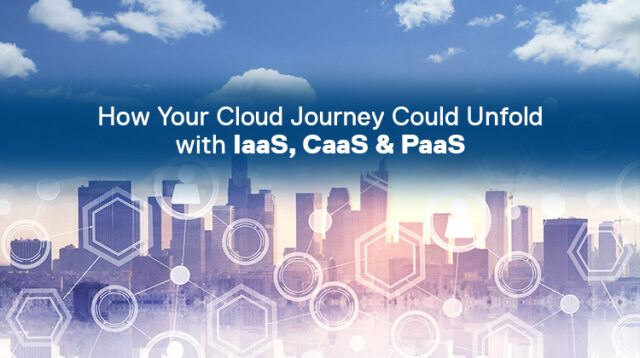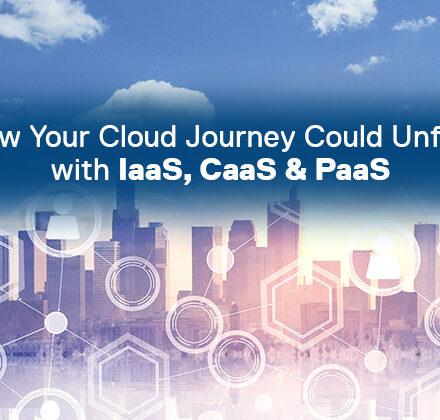Organizations around the globe understand the need to modernize their application portfolio. What many are struggling with, however, is how and where to begin. How does a large enterprise define, assess and begin the transformation of their applications? Should they leverage a modern cloud development platform and gateway to new app cloud placement? How do they balance cost and risk?
Today’s modern enterprise will utilize a range of application deployment models from physical and work machines virtualized on private and public infrastructures, through containers where we abstract the operating system with the application, to PaaS platforms like Pivotal Cloud Foundry where we can develop real cloud-native applications. And then there are other more progressive approaches to modern application development to be considered like Function as a Service, serverless, and others.
The Modern Enterprise in 2022
Based on data that we at Dell Technologies collected from a portion of our Enterprise customer base, the clear majority of workloads in today’s modern enterprise are still running in a traditional fashion with the most prevalent model, of course, being in virtual machines. About 8% in public, private and hybrid clouds and only 2% containerized or cloud native.
This, however, is forecast to change, rapidly!

By 2022, a strong shift is anticipated with the majority of applications moving to public, private or hybrid Infrastructure as a Service, significant growth in container consumption and cloud native development as well as other modern application development techniques.
So what does your platform model need to look like? Or more to the topic, what is your Multi-Platform strategy going to be?
It is more than likely that every service layer shown above will be represented.
Reducing IT Footprint
One of the biggest trends we’re seeing right now in the market is around data center consolidation and a drive to reduce IT footprint. One of the respective outcomes is a heavier push to the cloud – driving workloads to the cloud where it makes sense, looking to densify consumption, seeing what’s left, then shrinking the footprint of our new data center and reducing DC migration costs accordingly.
A logical off-shoot of this topic is emphasis on Software-as-a-Service or SaaS applications. Finding SaaS alternatives is very attractive to both IT and the business.
There are multiple benefits to SaaS but put simply, it gets you out of the software development and operations business and for many classes of applications, this makes sense. On the negative side, probably the biggest push back is Security.
Meanwhile utilizing Platform-as-a-Service or PaaS for modern application development is absolutely a game changer for customers looking to revolutionize their application development paradigm, deliver cloud native applications and digitally transform the business.
The biggest positive for PaaS is business alignment and on the flip side, the biggest negative is barrier to entry – PaaS adoption is about agility and DevOps and impacts every aspect of traditional IT. It’s a major paradigm shift that many companies simply are not prepared for.
Containerization is hot, very hot!
Containers are very much like a VM but include an abstraction of the OS eliminating the need that a VM has to carry the entire OS and Hypervisor. As such, containers tend to be orders of magnitude smaller and can spin up in a fraction of the time and resource than the VM. One concerning trade off is that each container carries a root password which can be troubling from a security standpoint.

And finally, we have Infrastructure-as-a-Service or IaaS, and Traditional Infrastructure – which would include co-lo facilities as well as managed services. According to the statistics we discussed earlier, this is where as much as 98% of applications and data live today – and if you believe the projections looking forward – it is also where 85% of your applications and data will live 4 years from now.
I’m sure that every one of your enterprises is using IaaS today. Whether that’s in a centralized controlled manner driven by IT or the result of an anxious business user with a credit card. IaaS represents great opportunity and great risk. We know that shifting from traditional infrastructure to cloud can represent cost savings as high as 70% or potentially cost millions of dollars per month in uncontrolled spend.
Traditional Infrastructure is of course here to stay except the very few of you that are interested in zero footprint.
Multi-platform Model
A multi-platform strategy is simply a stepping stone to a final list of targeted landing zones to be realized over some time horizon.
There are many options to be considered and in some cases the choice will be quite simple, while in others there will be no clear winner and final selection will be arbitrary.
So how do we go about building a multi-platform strategy?
Developing a multi-platform strategy is built on two major areas of consideration.

First, the current portfolio and its demands. Portfolio Analysis initially gives us visibility into the demands that the current portfolio has on the future state multi-platform model and specific target landing zones. Once those landing zones are firm, we can continue analyzing the portfolio and, hopefully, become leaner as we progress and the reason why we recommend a sprint-based approach. Every customer situation is different, but we typically look to advance-profile on the order of 25% of the portfolio. This gives us a relatively high level of confidence that, if inventory selection was done right, we should have a good representation of the portfolio.
Second, the Business and IT agenda. This agenda really defines what IT needs to be in order to support the future state.
It’s a matter of getting to what’s critical today and in the foreseeable future. It requires a range of input from Business and IT stakeholders as well as representation from Application Development. Certainly, in a smaller enterprise this can be scaled back to a relatively small group, but in a large enterprise, this could involve dozens of stakeholders.
The kinds of information that need to be understood:
- Cost including controlling spend, favoring OpEx over CapEx or for customers that are already over-extended in the cloud, perhaps a shift back to on-prem through repatriation, and a better balance between OpEx and CapEx.
- Business demand and the appetite for digital transformation – some companies have already completed their digital transformation journey, others have begun on their journey, and many are yet to get started.
- What digital transformation may bring especially in terms of the internet of things, big data and new devices deployed demanding a new approach to multi-tiered computing, will all influence the platform model and the multi-cloud model that will be its derivative.
- Legal and regulatory changes that can have significant influence especially on data transmission and storage.
- End-user computing.
- The need for speed and finally…
- Current Cloud footprint, cloud strategy and the cloudification of existing applications all must be considered.
Summary
With a detailed understanding of your current portfolio and the Business and IT Agenda, Dell Technologies can develop a platform strategy to support your application demands in the future and do it in a cost effective and efficient way. This multi-platform strategy will drive a multi-cloud strategy which then can be used as the basis for infrastructure and operating model transformations.


